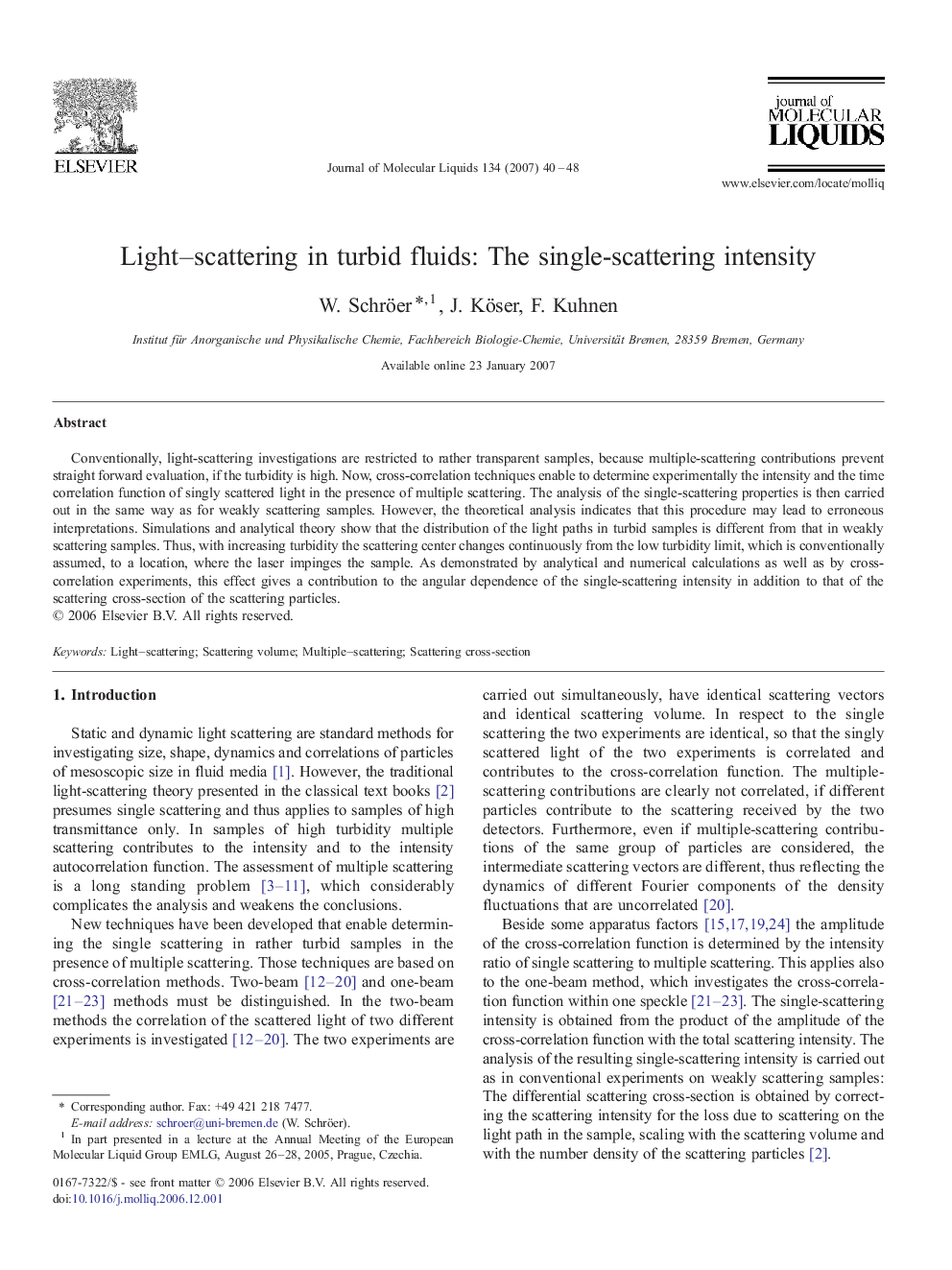| Article ID | Journal | Published Year | Pages | File Type |
|---|---|---|---|---|
| 5413518 | Journal of Molecular Liquids | 2007 | 9 Pages |
Abstract
Conventionally, light-scattering investigations are restricted to rather transparent samples, because multiple-scattering contributions prevent straight forward evaluation, if the turbidity is high. Now, cross-correlation techniques enable to determine experimentally the intensity and the time correlation function of singly scattered light in the presence of multiple scattering. The analysis of the single-scattering properties is then carried out in the same way as for weakly scattering samples. However, the theoretical analysis indicates that this procedure may lead to erroneous interpretations. Simulations and analytical theory show that the distribution of the light paths in turbid samples is different from that in weakly scattering samples. Thus, with increasing turbidity the scattering center changes continuously from the low turbidity limit, which is conventionally assumed, to a location, where the laser impinges the sample. As demonstrated by analytical and numerical calculations as well as by cross-correlation experiments, this effect gives a contribution to the angular dependence of the single-scattering intensity in addition to that of the scattering cross-section of the scattering particles.
Keywords
Related Topics
Physical Sciences and Engineering
Chemistry
Physical and Theoretical Chemistry
Authors
W. Schröer, J. Köser, F. Kuhnen,
